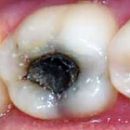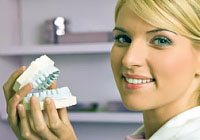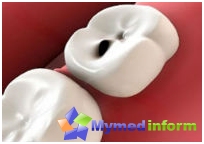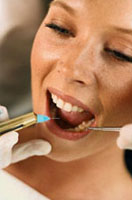Caries treatment standards are a set of effective methods and techniques, as well as guarantees in the treatment of all kinds of disease, including «blooming» Caries in children. Pathogenic streptococci and caries are connected with each other in one pathogenetic chain. Endogenous prevention of caries is important, like no other, because this is the health of the future mother and child.
Content
- Streptococcus Mutans and Caries
- «Flowering» Ostive Caries: Children's Problem
- Endogenous prevention of caries
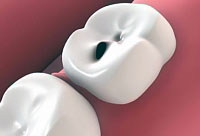 Health treatment standards One of the leading concepts of organizing medical care to the population and quality management, as a guarantee of state support for medical care. Under the Moscow State Medical and Dental University, a clinical laboratory has been created, which is engaged in the problems of standardization in dentistry and monitoring these events.
Health treatment standards One of the leading concepts of organizing medical care to the population and quality management, as a guarantee of state support for medical care. Under the Moscow State Medical and Dental University, a clinical laboratory has been created, which is engaged in the problems of standardization in dentistry and monitoring these events.
In Russia, according to the order of the Ministry of Health and Social Development, the official practice of applying therapeutic standards for the treatment of caries was introduced to assess the quality and continuity of medical services in dentistry. Standards of treatment in medicine, caries including — This is a set of effective methods and techniques used in the treatment of the disease to ensure a long-term positive effect, taking into account international experience and recommendations, including a description of the diagnostic techniques and the sequence of technological steps developed for all types of dental treatment.
Streptococcus Mutans and Caries

Sugar — The main food of bacteria that distinguish various exchange products, mainly acid, contributing to the damage to teeth and enamel, the destruction of the solid tooth tissue and the appearance of the carious cavity. According to the World Health Organization, about 98% of the adult population of the planet are subject to long-term influence of acid under the influence of bacteria in the oral cavity. Scientists, on the basis of numerous experiments, proved that the disease occurs under the influence of numerous cariesel microorganisms, while in the chain of the development of the carious cavity such a connection is obvious.
Streptococcus refers to a group of gram-positive bacteria capable of multiplying and produce acid without the presence of oxygen. This microbe plays a fundamental role in the destruction of dental enamel and local demineralization, which is happening especially after the use of carbohydrates. The presence of fermentation products in saliva is directly related to the development in the oral cavity of streptococci. Caries and its occurrence can be avoided by removing microbes using antiseptic or mechanical means.
In addition, gram-positive microorganisms of lactobacilles producing lactic acid also play an important role in the pathogenesis of the disease, the presence of a large amount of these bacteria is an indicator of carious lesions.
«Flowering» Ostive Caries: Children's Problem
«Flowering» Caries more often striking temporary teeth, and this problem usually occurs in children 3-4 years. Owners «blooming» Caries — These are children with the identification of five and more carious defeats per year, when several crowns can collapse in a short time. Typically, carious lesions of this type are detected on the lifting surface of the tip of the upper jaw near the edge of the gums in the form of the zone of decalcination of a special whitish color, which as a result of emergency pigmentation acquired a yellowish tint.
The process as it turns out around, sometimes leading to the pathological inclination of the crown, without significant mechanical stress. Children prone to excessive use of sweet carbonated drinks are included in the group «blooming» Risk. In the history of kids with such a dental problem, frequent acute infectious diseases, chronic tonsillitis, rheumatism, tendency to colds are noted, and during the examination they have extensive carious damage to the teeth of all groups, including fangs and lower incisors. With an active process, approximately 3-4 years old, the teeth are completely destroyed, the pulp dies, only crowns remain.
Endogenous prevention of caries
Endogenous prevention, including the process of mineralization and teeth formation, begins in the embryonic period of the child's development, is aimed at maintaining the health of the future mother. For endogenous prevention of caries, it is important to enter a sufficient number of calcium salts, fluorine, phosphorus and other trace elements and vitamins. Endogenous antenatal prevention of caries is aimed at preventing diseases causing dental enamel and consists of compliance with the rules of food intake, compliance with the diet and purposeful use of drugs. The health of the future mother — The main goal is about it — In the following articles.

